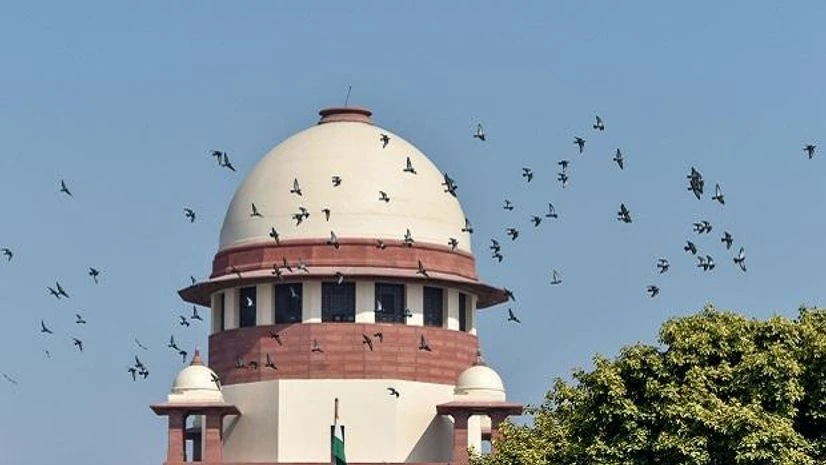A curative petition was filed in the politically sensitive Ram Janambhoom-Babri Masjid land dispute case on Tuesday challenging the November 9 verdict which cleared the way for construction of a Ram Temple at the disputed site at Ayodhya.
The top court had in a historic verdict on November 9 last year backed the construction of the Ram temple by a government trust at the site, and ruled that an alternative 5-acre plot must be found for a mosque in the Hindu holy town.
It had on December 12 dismissed a batch of 19 review pleas filed by Muslim and Hindu parties after finding no ground to entertain them.
The curative petition filed by Mohammed Ayyub, President of Peace Party of India, contended as erroneous the November 9 judgment and said that the possession must be held in favour of the Muslims who were in "lawful possession till the premises were attached".
This is the first curative petition filed by a political party, which was not one of the original litigants in decades old title dispute.
A curative petition is the last legal recourse in the apex court and is generally heard in-chamber unless a prima facie case is made out for reconsideration of the verdict.
More From This Section
The petition said that title claim must be based on exclusive possession but the Hindus did not have unimpeded possession of either the inner or the outer courtyard of the disputed property.
The mere existence of a structure underneath the disputed property cannot lead to title claim and no argument other than reliance on the report of Archaeological Survey of India (ASI) was put forth, the plea said.
"Having marshalled through the entirety of evidence, this court specifically finds that a finding of title cannot be based in law on the archaeological findings which have been arrived at by ASI," it added.
"No argument other than reliance on the report of the ASI was put forth to support the contention that even if the underlying structure was believed to be a temple, the rights that may flow from it were recognized by subsequent sovereigns. The mere existence of a structure underneath the disputed property cannot lead to a legally enforceable claim to title today," it said.
It also contended that at some point of the Mughal empire, a mosque was constructed at the disputed site.
"Even if this court was to assume that the underlying structure was in fact a Hindu temple which vested title to the disputed site in the plaintiff deities, no evidence was led by the plaintiffs to establish that upon the change in legal regime to the Mughal sovereign, such rights were recognized," the plea said.
The judgment holds that Muslims were in possession of the mosque till it was desecrated and Hindus came to be in possession by illegal acts and the same cannot be equated to lawful possession as it is unprecedented, unconscionable and against the principles of Rule of Law to equate the two, the petition said.
"There is no dispute in regard to the faith and belief of the Hindus that the birth of Lord Ram is ascribed to have taken place at Ayodhya. What is disputed is whether the disputed site below the central dome of the Babri Masjid is the place of birth of Lord Ram.
"And, it was categorically submitted that there is no evidence of the area below the central dome being worshipped as the place of birth of Lord Ram before 1949. And, the judgment seems to have held that there, in fact, was no evidence to suggest that the Ram Chabutra was ever under the central dome or that the idols existed inside the mosque prior to December 1949," the petition said.
The petitioner submitted that since its construction during Mughal ruler Babur's regime, the structure was being used as a mosque and the travelogues also noticed the same, therefore it cannot be said there was no evidence prior to 1860 of worship by the Muslims at there.
Among the 10 original litigants, whose review petitions were dismissed on December 12, last year by the apex court, eight were filed by the Muslim parties which includes those supported by the All India Muslim Personal Law Board.
Key Muslim litigant, Uttar Pradesh Sunni Central Waqf Board, had decided not to seek review of the unanimous November 9 verdict.
Nirmohi Akhara and Akhil Bharat Hindu Mahasabha were the two Hindu bodies whose review pleas were rejected by the bench.
Among the nine "third parties" were 40 rights activists who had jointly moved the top court seeking review of its verdict.
A 5-judge bench, headed by the then Chief Justice of India Ranjan Gogoi, had in a unanimous verdict on November 9 decreed the entire 2.77 acre disputed land in favour of deity 'Ram Lalla' and also directed the Centre to allot a five-acre plot to Sunni Waqf Board for building a mosque in Ayodhya.

)
